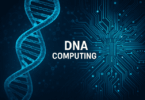Introduction:
Edge Computing is a fascinating topic that has become increasingly important in recent years. It is a rapidly evolving technology. In addition, it is an approach that aims to bring computing power closer to where it is needed. Moving closer reduce the latency and improve the performance of real-time applications. It transform many industries, such as healthcare, manufacturing, transportation, and retail.
In recent years, there is a significant increase in the volume and velocity of data generated by devices and sensors at the edge of the networks. That led to a growing need for new approaches to data processing and management that can support real-time applications and services.
Edge Computing provides a solution to these challenges by making data processing and analysis to be carried out closer to the source of the data. Further, it is not a replacement for cloud computing but rather it is a complementary approach to Cloud Computing.
Cloud computing is playing a critical role in enabling data storage, analysis, and management at large. However, it is not always the most efficient solution for real-time applications. Especially cloud computing does not have many benefits in those applications that require low latency and high bandwidth connections. Edge Computing helps to fill that gap; by enabling real-time data processing and analysis at the edge of the network.
In this blog post, let us explore the concept of Edge Computing in more detail. We will discuss how Edge works. What are its benefits and challenges? And, its applications in various industries. We will also examine the relationship between Edge Computing and other emerging technologies, such as 5G and the Internet of Things (IoT). And discuss the potential impact of Edge on the future of computing and data management.
What is Edge Computing?
Edge Computing is a fairly distributed computing framework that brings Edge applications very closer to data sources such as local edge servers or IoT devices. Its proximity to data sources can deliver strong business benefits, such as faster insights, improved response times, and better bandwidth availability.
Edge Computing is a more promising computing paradigm. In Edge Computing client data is processed at the periphery of the network, as close to the originating source as possible. It is distributed information technology (IT) architecture. It also refers to a range of networks and devices near or with the user. Edge is about processing data closer to where it is being generated.Further, it enables high-speed processing of greater volumes of data. In addition, it helps to get action-led results in real-time. It offers some special advantages over traditional models.
In other words, Edge Computing is a distributed computing model that brings computation and data storage closer to the location where it is needed. In this model, computing resources such as servers, storage devices, and networking components are placed in close proximity to the data source or the data consumer. This approach differs from traditional cloud computing. In Cloud, the data is processed and stored in centralized data centers. And those data centers can be located far away from the end-user or device.
The goal of Edge Computing is to reduce latency and improve performance. Since the processing of data is closer to; the data where it is generated or consumed to enhance security. By bringing computation to the edge of the network, Edge support real-time applications such as video streaming, autonomous vehicles, and industrial automation.
Edge Computing tackles the growing in-device computing capability. In-device computing capability can provide deep insights and predictive analysis in real-time. The raise in analytics capability of edge devices improves quality output.
Edge Computing is increasingly popular as the number of connected devices and sensors continues to grow. With more devices generating and consuming data, the need for faster and more efficient data processing is becoming more critical.And, Edge Computing helps to address this need by providing a more decentralized and distributed computing model that supports a wide range of applications and use cases.
Edge Computing Definition:
Edge Computing refers to the practice of processing data and performing computation at or near the edge of a network. It is rather than relying on a centralized cloud computing environment. Edge Computing brings computing resources closer to the source of data. And it enables faster processing and decision-making. And it reduces latency and bandwidth requirements. It involves deploying servers, storage, and other computing resources in proximity to IoT devices, sensors, and other endpoints. It supports real-time decision-making, reduces network traffic, and enhances data security and privacy.
Edge Computing Concept:
The concept of Edge Computing involves moving computing resources closer to where the data is being generated, processed, or consumed. Instead of relying on a centralized cloud computing environment, this model is very closer to the end user in the network. By doing so, Edge enables faster data processing. Further, it reduces latency and improves data privacy and security.
The key idea behind Edge Computing is to bring computing resources closer to the source of data. The source can be sensors, IoT devices, or other endpoints. This is accomplished by deploying Edge Computing infrastructure. That may include servers, storage, and networking equipment, in proximity to these endpoints. The Edge infrastructure may be located in a local data center, a telecoms tower, or a device itself.
Therefore, with Edge Computing, data is processed locally at the edge of the network. And only relevant information is sent to the cloud or data center for further processing and analysis. This reduces the amount of data that needs to be transmitted over the network. It results in reduced network traffic and lower latency.
The concept of Edge Computing has gained traction in recent years, particularly with the growth of IoT devices. And, the need for real-time processing of data speeds up its growth. It is adopted in various industries, including manufacturing, transportation, healthcare, and retail. It supports applications such as predictive maintenance, autonomous vehicles, and smart cities.
The concept of Edge offers several advantages. And, it includes faster processing, reduced latency, improved data security and privacy, and increased scalability.In addition, it is expected to play an increasingly important role in the future of computing. It helps to connect more devices to the internet that require real-time processing of data.
Edge Computing can unlock the potential of the vast untapped data that’s created by connected devices. It can uncover business opportunities. It can increase operational efficiency. Further, it can provide faster, more reliable and consistent experiences for its customers. The best Edge Computing models help the business to accelerate its performance by analyzing data locally. A well-considered approach to Edge keeps the workloads up-to-date according to predefined policies. It helps to maintain privacy and will adhere to data residency laws and regulations.
Parts of an Edge Network:
An edge network typically consists of several components that work together. It provides computing and networking resources at the edge of the network. Some of the key parts of an edge network are:
- Edge Devices
- Edge Servers
- (Edge) Gateways
- Edge Routers
- Edge Management and Orchestration Software
- (Edge) Security Software
The Edge devices are the endpoint devices that generate process or consume data, such as sensors, IoT devices, and mobile devices.
The servers that are deployed at the edge of the network to process data and run applications are the computing resources called edge servers. These servers may be located in a local data center, a telecoms tower, or a device itself.
The devices that are connecting edge devices to the edge servers to the cloud or data center over a wide area network are termed Edge gateways. Edge gateways may provide protocol translation, data aggregation, and data filtering capabilities. Edge routers are the routers that connect edge servers to the cloud or data center over a wide area network (WAN). They provide quality of service (QoS) and security features to ensure reliable and secure connectivity.
Edge management and orchestration software provide a centralized management and orchestration platform for the edge network. It allows administrators to monitor and manage edge devices, servers, and gateways. Further, it deploys applications and services to the edge network. Edge security software provides security features such as encryption, authentication, and access control to protect data and devices at the edge of the network from cyber threats.
Edge Network is a complex system that consists of multiple components that work together to provide computing and networking resources at the edge of the network.
How does Edge Computing Work?
Edge Computing works by distributing computing resources closer to the data source or to the consumer who needs to use the data. The resources are such as servers, storage devices, and other networking components. This distribution of resources allows data to be processed and analyzed in real-time, without needing to be transferred to a centralized data center.
The basic architecture of an Edge Computing system includes three layers: Edge Devices, Edge Servers, and Cloud Servers.
Edge devices are the devices that generate or consume data. These devices could be sensors, IoT devices, Smartphones, or any other device that is connected to the internet. Edge devices collect and transmit data to the edge servers for processing.
The Edge servers are the computing resources that are deployed closer to the edge devices. Edge servers could be located in a factory, a retail store, or a smart city. These servers process the data generated by edge devices. and they send the results to the cloud servers. Edge servers can also store data locally, reducing the need for data to be transferred over the network.
Cloud servers are centralized data centers that store and process large amounts of data. Cloud servers receive data from the edge servers for further analysis and processing. And these servers also store data for long-term analysis and archiving.
The communication between edge devices, edge servers, and cloud servers is facilitated by a combination of wired and wireless networks such as Wi-Fi, cellular, and Bluetooth.
Edge Computing not only allows for real-time data processing, reduced latency. But also it improves data security and helps to reduce network bandwidth requirements and enables more efficient use of cloud resources.
Edge vs. Cloud
Edge Computing and cloud computing, both are important computing paradigms. But they differ in several ways.
Data Processing Location:
In cloud computing, data is processed and analyzed in centralized data centers located far away from the end-user or device. But Edge Computing brings computing resources closer to the location where data is generated or consumed. This approach of Edge reduces latency and enables real-time data processing.
Network Bandwidth:
With cloud computing, data must be transmitted over the network to the centralized data center for processing. Therefore it consumes a lot of network bandwidth. With edge computing, data is processed locally on edge devices or edge servers. Hence it reduces the need for data to be transmitted over the network. Thereby it saves a lot of bandwidth.
Scalability:
Cloud computing provides nearly infinite scalability by allowing businesses to scale up or down their computing resources as needed. With edge computing, scalability is limited by the availability of edge devices or edge servers in the vicinity of the data source or consumer.
Security:
In cloud computing, data is transmitted over the network to the centralized data center for processing. That increases the risk of security breaches. In edge computing, data is processed locally on edge devices or edge servers. it reduces the risk of security breaches.
Cost:
Cloud computing can be more cost-effective than Edge Computing for certain use cases. Especially those that do not require real-time data processing. However, Edge is more cost-effective for use cases that require real-time data processing. Some examples are autonomous vehicles and industrial automation.
Edge and Cloud Computing both have their advantages and disadvantages. And the choice between the two will depend on the specific use case and business requirements.
Edge vs. Fog Computing:
Edge Computing and Fog Computing are two related computing paradigms. They share some similarities but also have some distinct differences.
As we discussed earlier, Edge Computing brings computing resources closer to the location where data is generated or consumed to reduce latency and enable real-time data processing. Edge devices and edge servers can be located in factories, retail stores, and smart cities nearer to the source or the user. Or it can be any other location close to the data source or consumer.
Fog Computing is a decentralized computing architecture that extends cloud computing to the edge of the network. Fog computing is similar to edge computing. It brings computing resources closer to the data source or consumer as Edge. However, Fog computing also includes a layer of intermediary devices between the edge devices and the cloud servers. These intermediary devices are known as Fog nodes. These Fog Nodes provide additional computing resources and storage capacity.
The main difference between Edge and Fog Computing is the degree of decentralization. Edge is a fully decentralized architecture. And it places computing resources directly on edge devices or edge servers. Fog computing is a partially decentralized architecture. And Fog includes a layer of intermediary devices between the edge devices and the cloud servers.
Both Edge Computing and Fog Computing provide advantages such as reduced latency, improved data security, and more efficient use of network bandwidth. However, Fog Computing provides additional benefits such as increased computing and storage capacity, improved scalability, and greater flexibility in deploying computing resources.
Even though Edge and Fog share some similarities they differ in computing architectures with different degrees of decentralization and different use cases.
The choice between the two will depend on the specific requirements of the application or use case.
Why is Edge Computing Important?
Edge Computing is important for several reasons.
- Real-Time Processing
- Reduced Latency
- Improved Data Security
- Efficient use of Network Bandwidth
- Scalability
Real-Time Processing:
With Edge Computing, data can be processed and analyzed in real time. There is a need to transfer data to a centralized data center. This is very crucial for use cases such as autonomous vehicles, industrial automation, and healthcare, in which real-time processing is critical.
Reduced latency:
By bringing computing resources closer to the data source or consumer, Edge Computing reduces latency and improves response times. In games, augmented reality, and virtual reality low latency is very crucial for a better user experience. Edge Computing provides reduced latency for the best user experience.
Improved data security:
Since the data processing is happening locally on edge devices or edge servers, it improves the data security and the risk of data breaches. It is necessary for some applications used by financial services, healthcare, and government, where data security is critical.
Efficient use of network bandwidth:
The entire processing of data is happening locally on edge nodes, and it reduces the need for the data transferred over the network. Therefore it can save the network bandwidth and reduce costs.
Scalability:
Edge Computing is more scalable than centralized cloud computing for certain use cases. By deploying computing resources closer to the data source or consumer, Edge provides greater computing and storage capacity than centralized cloud computing.
Therefore, Edge Computing is important because it enables real-time processing, reduces latency, and improves data security. It enables more efficient use of network bandwidth and provides greater scalability for certain use cases.
What are the Benefits of Edge Computing?
Edge Computing offers various benefits, such as:
- Real-Time Processing
- Reduced Latency
- Improved Data Security
- Efficient use of Network Bandwidth
- Scalability
These benefits make Edge Computing an important technology for a wide range of applications and use cases.
Challenges of Edge Computing:
While Edge offers many benefits, it also faces several challenges, including:
- Very Limited Computing Resources
- Heterogeneous Devices
- Data Management
- Security
- Interoperability
- Maintenance and Update
Limited Computing Resources:
Edge devices and edge servers typically have limited computing resources, such as processing power, memory, and storage. Therefore it will limit the types of applications and services that can be deployed on edge devices.
Heterogeneous Devices:
Edge Computing involves deploying computing resources on a wide range of heterogeneous devices, such as Smartphones, sensors, and industrial machines. Hence, it makes it challenging to develop and deploy applications that run on a diverse set of devices.
Data Management:
It generates large amounts of data, which can be difficult to manage and store. It is particularly challenging in environments like mobile devices and sensors that have limited storage capacity.
Security:
Edge devices and edge servers are vulnerable to security threats. It is vulnerable to malware and hacking, which can compromise data and devices. Securing edge devices and servers are more challenging than securing centralized data centers.
Interoperability:
It involves integrating computing resources across a wide range of devices and platforms, which is interoperability a challenge. Developing standards and protocols for interoperability is essential to ensure that devices and platforms can communicate and work together seamlessly.
Maintenance and Updates:
Edge devices and servers require maintenance and updates periodically. It will ensure that they are operating properly and are secure. However, maintaining and updating devices that are distributed across a wide range of locations is more challenging than maintaining centralized data centers.
Therefore, though, Edge offers many benefits, it also faces several challenges related to limited computing resources, heterogeneous devices, data management, security, interoperability, and maintenance and updates. Addressing these challenges is essential to ensure the success of Edge Computing as a technology.
Edge Computing Implementation:
Implementing Edge Computing involves several steps that include the following:
- Identifying the use cases
- Evaluating Edge Devices and Platforms
- Developing Applications
- Deploying Edge Infrastructure
- Configuring and Managing Edge Infrastructure
- Integrating with Cloud Services
- Monitoring and Optimizing Performance
The first and foremost thing is to identify the use cases where Edge can provide the best benefit such as real-time processing with improved data security and minimum latency. Use cases include applications such as industrial automation, healthcare, autonomous vehicles, or smart cities.
The next steps are to evaluate the edge devices and platforms that are available for optimization. And need to determine the right one that is best suited to the use cases. Before proceeding further, one needs to consider the factors such as processing power, memory requirement, storage needed, connectivity, and security.
Once finalized the Edge devices and platforms, the required applications that can run on them needs to be developed. It may involve optimizing the existing applications or the need to develop a new application that is exclusive to Edge computing.
Deploying Edge infrastructure involves positioning the edge servers, gateways, and sensors to the location where it is exactly needed. That may involve may involve deploying hardware in remote locations, such as factories, hospitals, or retail stores.
Once they are deployed, it needs to be ensured that are working properly and more securely. It involves monitoring performance, updating software and firmware, and troubleshooting issues.
The Edge Infrastructures need to be integrated with cloud services such as cloud storage, machine learning, and analytics. The integration with the cloud will help in advanced data processing and analysis. In addition, it needs to develop APIs and protocols to enable edge devices to communicate with cloud services.
Monitoring and Optimizing the performance is the last and crucial step involved in implementation. It needs to be monitored for the performance of the Edge infrastructure and applications to ensure that they are meeting the needs of the use case. In addition, Optimizing the configuration and deployment of edge infrastructure can improve performance and reduce costs more effectively.
Implementing Edge Computing involves the following steps: identifying use cases, evaluating edge devices and platforms, developing applications, deploying edge infrastructure, configuring and managing edge infrastructure, integrating with cloud services, and monitoring and optimizing performance. Successful implementation of Edge can provide significant benefits, such as real-time data processing, reduced latency, and improved data security.
Edge Computing, IoT Possibilities:
Edge Computing and the Internet of Things (IoT) are closely related to each other. And they can offer many possibilities for businesses and organizations together.
Here are some of the possibilities that Edge Computing enables when combined with IoT:
Edge can process data from IoT devices in real time, enabling businesses to make faster decisions based on up-to-date information. It is particularly useful in applications such as industrial automation, where real-time monitoring and control can improve efficiency and reduce downtime. In Edge Computing, the centralized application is running close to end users, either on the user device itself or on the network edge. It reduces latency by processing the data locally.
It is very crucial in applications such as autonomous vehicles. Since the sensitive data processing is happening locally it improves data security. Besides, it is particularly important in applications such as healthcare and finance, where data security is a top priority. Besides the computing resources are distributed across a wide range of edge devices and edge servers which can improve scalability considerably.
It helps business to scale their applications more easily and cost-effectively. It enhances the user experience by providing a faster response. Since the data is processed locally it is possible to provide quick replies. In addition, it is very crucial in virtual and augmented reality applications. Edge can enable predictive maintenance by analyzing data from IoT sensors in real time and predicting when maintenance is required. It can improve equipment uptime and minimize maintenance costs.
Edge Computing and IoT offer many possibilities for businesses and organizations, including real-time data processing, reduced latency, improved data security, improved scalability, enhanced user experiences, and predictive maintenance. By leveraging these possibilities, businesses can gain a competitive edge. And they can improve their operations in a wide range of applications.
Edge Computing Applications:
Edge Computing has a wide range of applications across different industries, such as:
- Industrial Automation
- Transportation
- Health Care
- Energy
- Retail
- Telecommunication
- Agriculture
- Smart Cities
Employing it in industrial automation will support real-time monitoring and control of industrial equipment. It can access and inform predictive maintenance and quality control.
Edge is used in transportation to support applications such as connected cars, autonomous vehicles, and smart traffic management.
In Health Care applications such as remote patient monitoring, real-time decision-making, and personalized medicine it can be employed.
Edge is used in retail to support applications such as real-time inventory management, personalized marketing, and customer analytics.
Employing Edge Computing in the energy industry to support applications such as smart grid management, and energy optimization can be successful.
It is used in telecommunications to support applications such as 5G network slicing, and real-time network optimization. And it is used in virtualized network functions.
It is used in agriculture to support applications such as precision farming, real-time monitoring of crops, and predictive analytics.
Edge is used in smart cities to support applications such as real-time traffic management, energy optimization, and public safety.
Overall, Edge Computing can be applied in a wide range of industries and applications where real-time processing and decision-making are critical. And where there is a need for reducing latency, bandwidth, and security risks.
Edge Computing and Telecommunications:
Edge Computing and telecommunications are closely related to each other. And, it has significant implications for the telecommunications industry. Telecommunications networks traditionally relied on centralized architectures. The data is transmitted to a central data center or cloud for processing and storage. However, with the increasing demand for low-latency and real-time applications, they may not be sufficient to support these applications.
Edge Computing enables telecommunications providers to move computing resources and data processing closer to the edge of the network to reduce latency. And it can improve the performance of real-time applications. It is particularly important in the case of 5G networks that require low latency and high bandwidth to support applications.
Telecommunications providers can leverage Edge Computing to deploy network functions and services at the edge of the network. Such as network slicing, real-time network optimization, and content delivery. Edge can reduce the load on their core networks, improve network efficiency, and reduce network congestion.
It has significant implications for the telecommunications industry. It can enable telecommunications providers to support a wide range of real-time applications and services. Further, it also improves network efficiency and reduces network congestion.
Edge and NFV can work together to support a wide range of services and applications, such as virtual private networks (VPNs), firewalls, load balancers, and application delivery controllers (ADCs). It requires low-latency and high-bandwidth connections.
Overall, Edge Computing and NFV are complementary concepts that can work together to improve the performance, flexibility, and efficiency of network services and applications.
Edge Computing and 5G Solutions:
They are at the forefront of the new technological world. Edge with 5G creates wonderful opportunities in every industry. It brings computation and data storage closer to where data is generated. It enables better data control and reduced costs. Further, it gives faster insights and actions, and continuous operations.
5G and Edge are two indistinguishably interlinked technologies. Both technologies are poised to significantly improve the performance of Edge applications and to handle huge amounts of data processing in real time. By installing a data processing application for 5G on the Edge, there is a significant diminution in the data processing time. By working with Edge, 5G can afford faster data transmission within devices or applications.
The adaptation of 5G from 4G opens new avenues for a variety of industries. 5G enables software-defined networks or SDN. SDN helps to manage data, and device intelligently with the help of software layers. Edge Computing helps to unlock the potential of 5G. It has open-edge ecosystems of software, hardware, and network components and network components to run IoT and AOI applications closer to the data source with the help of RAN infrastructures.
5G networks help to transfer a very large amount of data at high speed and Edge computation offers proper infrastructures of edge nodes to de-load the data from the core nodes. And it does the local management of data. Multi-access Edge Computing (MEC) offers capabilities of cloud computing at the edge of the network. MEC provides ultimate solutions to manage 5G network traffic among distributed edge servers/edge nodes to process large amounts of IoT data at the edge.
Future of Edge Computing:
The future of Edge Computing is promising. It is expected to play a significant role in shaping the future of computing and data management. As the number of connected devices continues to grow, there will be a significant increase in the number of edge devices. These devices will be used to support a wide range of applications.
Both Edge and Cloud Technologies continue to evolve, we can expect to see greater integration and convergence between the two. It will enable more efficient data processing and management across the entire network, from the edge to the cloud. Edge Computing enables more real-time data processing and analysis. Therefore, we can expect to see an increased use of artificial intelligence (AI) and machine learning (ML) at the edge. It will enable more intelligent and automated decision-making. That will improve the efficiency and effectiveness of many applications and services.
As it becomes more prevalent, we can expect to see the emergence of edge-native applications that are designed specifically for Edge Computing environments. These applications will be optimized for low-latency and high-bandwidth connections and will leverage the unique capabilities of edge devices.
Edge enables more data processing and storage at the edge. Therefore, there will be an increased demand for security and privacy. There will be a need for the development of new security and privacy solutions that are specifically designed for Edge environments.
The future of Edge Computing is bright, and we can expect to see significant advancements and developments in the coming years. It will play a significant role in shaping the future of computing and data management.
Conclusion:
In conclusion, Edge Computing is an innovative technology that presents a world of possibilities for data processing and management. It allows for real-time data processing and analysis. It helps the applications to deliver fast and reliable results.
The future of Edge Computing is full of potential. As edge devices become more common, we can expect the emergence of new applications and services optimized for the edge. Edge-native applications will leverage the unique capabilities of edge devices. And that can enable them to operate with low-latency and high-bandwidth connections.
Edge and Cloud Technologies continue to develop; we can expect greater integration and convergence between the two. That will result in more efficient data processing and management. However, with the increase in edge computing, the challenge of ensuring security and privacy in Edge Computing environments will be more. Addressing these challenges will require innovative solutions and collaboration between technology providers and cybersecurity experts. An effective Edge Computing model needs to address network security risks, management complexities, and the limitations of latency and bandwidth.
We can expect to see new opportunities for innovation and transformation that were once thought impossible.







